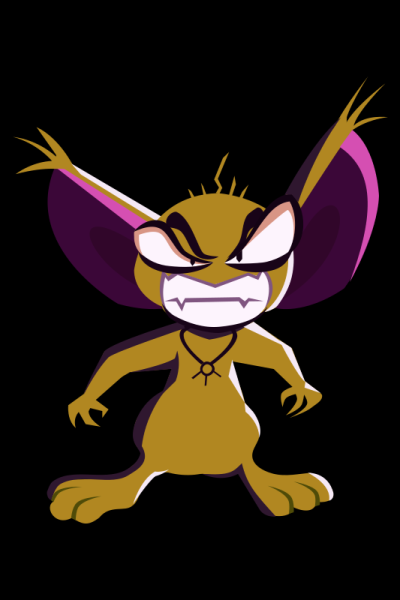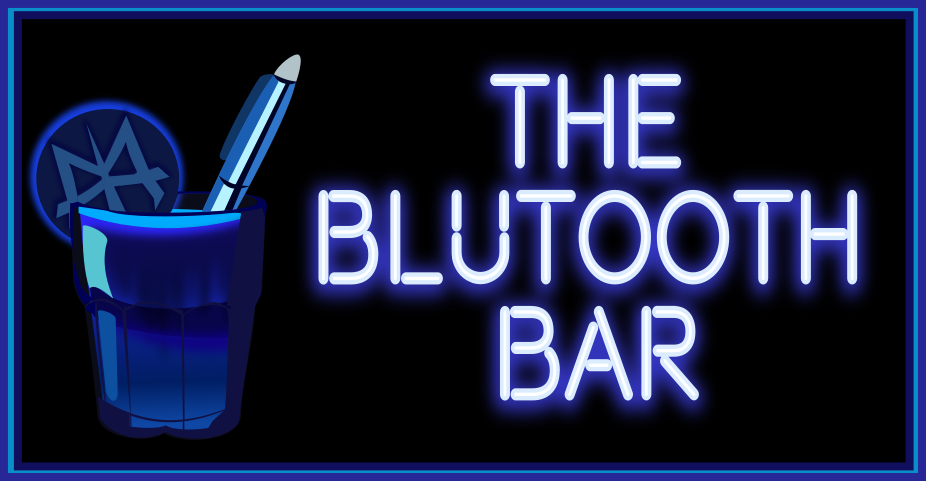Gremlin
Alert

Control
Type
Power of Mayhem
Creates Hazards
At the start of each orientation, manifest a hazard and shroud it in your nexus.
During any destiny, you may use this power to activate a hazard from your nexus, replacing any manifested hazard. If a hazard would manifest when the pool is empty, vaporize all hazards in your nexus first.
Legacy: A hazard manifests after every destiny charge, regardless of hazard warnings.
With their sticky fingers and sinister grins, the unscrupulous Gremlins have a penchant for mischief. Wherever they go, chaos is sure to follow. However, since they’re the ones causing the chaos, the resulting calamities have an uncanny ability to work in their favor.
Any: Destiny
Optional
Wild Flare
After destiny, if your destiny color manifests, you may discharge this flare to force the invader to scrap their cache and gain a free resupply.
Defender: Destiny
Super Flare
Whenever you shroud a hazard in your nexus, you may discharge this flare to scrap a hazard in your nexus and manifest another hazard, shrouding it in your nexus.
Any: Orientation
Modifications
- Originally the power to “meddle”. Changed to the power of “mayhem” to reflect the reckless chaos that Gremlin unleashes on the match.
- Original Gremlin can only use its power when a hazard does not manifest, to avoid conflict with manifested hazards. I am not a fan of how this aspect takes away from Gremlin’s flexibility, limiting the power in ways it cannot predict. I opted to give the power more control over hazards, since it is already limited by the number of campaigns that occur over the course of a match and the hazards it happens to manifest.
- Original Gremlin loses all of its hazards when the pool resets. I consider this clause unnecessary. If the match is outside the Hazardous Dimension, 35 campaigns would need to occur for the pool to reset. Even if hazards do occur naturally, it seems rather arbitrary as a downside, so long as there are still hazards in the pool to manifest. I changed the clause to only vaporize its hazards if the hazard pool is empty, which should virtually never happen.
- Original Super Gremlin can use its power as an invader and manifest an additional destiny. Since my Gremlin can use its power any invasion,
- Gremlin’s legacy causes hazards to manifest regardless of destiny, resulting in more hazards occurring than even in the Hazardous Dimension. With 35 different hazards in my Cosmic, there are a lot of different options that can influence the result of the match. The Boss Hazards that manifest will persist until the next Boss Hazard manifests, though the Danger Zone hazard will be redundant due to the legacy already invoking that effect. No one has control of these hazards with Gremlin gone, so everyone has to make the most of their situation. Original Cosmic has no legacies.
Tips
- When Gremlin activates a Boss Hazard, it will remain in effect until Gremlin activates another Boss Hazard, or another one activates on its own. As Gremlin, be sure you’re willing to commit to a Boss Hazard once you play it, unless you have a spare Boss Hazard you can swap out.
- As the Gremlin, avoid using a hazard just for the sake of it. Consider the best time to use each hazard you manifest and save them for when they would be most beneficial.
- If you befriend the Gremlin, you can gain some sway over Gremlin’s use of hazards and potentially avoid getting hit with a particularly nasty one like the Black Hole during your own invasion.
- Gremlin is not immune to its own hazards. Its power comes from its ability to freely choose the hazard at any given time. Activating things like Odd Comet when you have a strong odd attack pod or Black Hole when you are not participating can give Gremlin a diverse range of small advantages that add up over the match.
- Since Gremlin manifests random pods, it will need to leverage what it gets to best benefit it. Since it doesn’t have to use a hazard, it can save a useful hazard for when it would be most beneficial. For instance, it can save Psionic Resonator for when it will play a strong attack pod or Temporal Anomaly after it finishes its own campaign.
Development Notes
- I made sure to clarify that Gremlin’s legacy manifests hazards instead of every destiny gaining a hazard warning. This is to ensure that powers like Schizoid and Tourist aren’t unfairly rewarded or punished from this legacy, as it will keep the normal amount of hazard warnings.
- Gremlin was quite similar to my original redesign of Schizoid. After Gremlin was released, I realized I could repurpose my legacy mechanic for Schizoid and give hazards to Gremlin. Since there are no FFG aliens that deal with hazards directly, it gives Gremlin the design space to itself.
- The most we get in terms of other aliens working with hazards is having their power based around hazard warnings, such as Schizoid, Angel, and Tourist.
- The original hazard deck has multiple copies of some hazards to increase their frequency, allowing Gremlin to get multiple copies of them. My version of Cosmic only has one copy of each hazard, preventing Gremlin from getting multiple Temporal Anomalies to keep getting its own invasion over and over.
- There are 8 Boss Hazards out of the 35 Hazards that will be locked in once Gremlin selects them. Once a Boss Hazard takes effect, it can only be replaced with another Boss Hazard. The Cosmic Guardian will prevent pods with 20+ might from having combat value, turning them into N pods. The Danger Zone will result in every match having a random hazard unless Gremlin overrides it with its own. The Entropy Beast vaporizes a planet every time rainbow destiny manifests and can potentially eliminate all aliens if it destroys enough planets. The Madness of War will force all actors to commit maximum ships during a second invasion or later, increasing the stakes for extended campaigns. The New Mandate requires foreign bases to have 2 ships to provide authority or dominion, making it more difficult to maintain bases. The Peace Treaty allows negotiate pods to become automatic victories against attack pods, similar to Pacifist’s power. The Spirit of Friendship forces the current invader to become friends with an alien of their choice until the hazard is removed. The Subspace Emissary limits aliens to commissioning one alien per encounter, restricting the number of allies each alien can have. These Boss Hazards are very similar to legacies due to their persistence, and Gremlin can only remove them if it has another Boss Hazard on-hand.
- As with Schizoid and legacies, the strength of Gremlin’s power is naturally based around the strength of hazards. Hazards are similar to legacies in that they apply globally, and they may be asymmetrical in their effects. However, they only last until the end of the invasion they manifest (aside from Boss Hazards) and they generally only apply to actors.
- It is worth comparing Gremlin to Schizoid to gauge the difference in their strengths and weaknesses. Aside from Boss Hazards, hazards last for a single invasion when activated, giving Gremlin more precise control over how they are utilized in the match. It can activate an effect to reap the benefits, and then the effect will go away next invasion. With Schizoid, it is locked into whatever legacy it chooses until the next time a hazard warning occurs. While Schizoid never has to change its current “delusion”, it has a more limited window as to when it can change its delusion. On the other hand, since Schizoid’s legacies last as long as it wants, it can get more mileage out of each one. If it finds a legacy it likes, it can just keep it forever, similar to Gremlin’s Boss Hazards. With over 300 legacies in my Cosmic, Gremlin has a much higher chance of getting the hazard it wants in a given match, but it also means Schizoid gets way more options and variety. As a trade-off, Schizoid is always limited to a choice of three, while Gremlin has no limit to the number of hazards it can hold at once. Both powers are optional, which reduces the potential for either of their powers to backfire, since they are free to control when they are utilized.
- Gremlin is designed to manifest hazards only during invasions when no hazard warning occurs, to avoid causing conflict with the random hazard. The only exception is Super Gremlin, who has the option to override the existing hazard with its own. If hazards occur naturally, a hazard will theoretically manifest every invasion, which matches Gremlin’s legacy. I needed to specify that Gremlin’s power overrides manifested hazards due to The Danger Zone hazard that makes a hazard occur every invasion.
- Gremlin’s hazard pool is comparable to an essence, only it is one that Gremlin must build up over time. Gremlin can store as many hazards as it wants in its nexus unless it somehow grabs all of them. This situation will virtually never happen, since Gremlin would need to intentionally not use any of its hazards after 35 campaigns. I only added the clause in case some effect comes out that can permanently vaporize hazards, just as a bit of futureproofing. The hazards should still occur even if Gremlin is holding all of them.
- A “gremlin” is commonly used to refer to a fictional creature that takes the blame when something happens you can’t explain. For instance, when a person loses their car keys, they might blame it on the “pocket gremlins” who rooted through their pockets and intentionally hid their keys. The original power name to “meddle” is highly evocative of this definition of gremlins, but I wanted to capture the idea of a more reckless and dangerous gremlin to better match the feeling of unleashing hazards in the match.
- Gremlins are most known from the 1980’s film of the same name, and the franchise that resulted from it. The movie consists of small and seemingly innocent creatures that become savage beasts if you feed them after midnight. The creatures in that movie are known for causing chaos and destruction in rather childish ways, with no regard for the safety or wellbeing of others.
- Thematically, I imagine Gremlin’s power is similar to the gremlins of the film, where they cause problems in the surrounding systems that produces the same result as a naturally occurring hazard. In real life, it would be like them causing so much chaos that it starts a tornado or hurricane, which is similar to the effect they have in the movie. Even though they aren’t particularly strong on their own,
